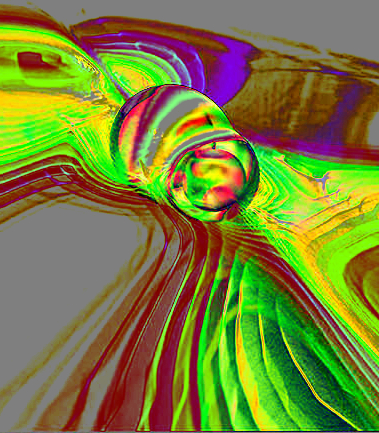Waves show galactic slams
 Experts have released new details of dozens of black hole collisions and gravity wave events.
Experts have released new details of dozens of black hole collisions and gravity wave events.
An international team of scientists, including Australian researchers from the ARC Centre of Excellence for Gravitational Wave Discovery (OzGrav), have collaborated on a study that presents 35 new gravitational wave detections.
Since gravitational waves were detected for the very first time in 2015, the Universe has been seen in a more detailed way.
The gravitational-wave Universe is teeming with signals. Gravitational waves are cosmic ripples in space and time that are caused by some of the most violent and energetic processes possible, like supernovas, merging black holes and colliding neutron stars.
The 35 recently-reported events bring the total number to 90 detections.
The newest gravitational wave detections come from the second part of the third observing run which lasted from November 2019 to March 2020.
Of the 35 new gravitational wave detections in this period: 32 detections were from pairs of merging black holes, while 3 were likely to come from the collision of a neutron star and a black hole.
The different properties of the detected black holes and neutron stars are important clues as to how massive stars live and then die in supernova explosions.
“It’s fascinating that there is such a wide range of properties within this growing collection of black hole and neutron star pairs,” says study co-author and OzGrav PhD student Isobel Romero-Shaw (Monash University).
“Properties like the masses and spins of these pairs can tell us how they’re forming, so seeing such a diverse mix raises interesting questions about where they came from.”
Dr Hannah Middleton, postdoctoral researcher at OzGrav, University of Melbourne, and co-author on the study says; “Each new observing run brings new discoveries and surprises. The third observing run saw gravitational wave detection becoming an everyday thing, but I still think each detection is exciting.”
Of the 35 new events, some notable discoveries include:
● Two mergers between possible neutron star - black hole pairs. These are called GW191219_163120 and GW200115_042309, the latter of which was previously reported in its own publication. The neutron star in GW191219_163120 is one of the least massive ever observed
● A merger between a black hole and an object which could either be a light black hole or a heavy neutron star called GW200210_092254
● A massive pair of black holes orbiting each other, with a combined mass 145 times heavier than the Sun (called GW200220_061928)
● A pair of black holes orbiting each other, in which at least one of the pair is spinning upright (called GW191204_171526)
● A pair of black holes orbiting each other which have a combined mass 112 times heavier than the Sun, which seems to be spinning upside-down (called GW191109_010717)
● A ‘light’ pair of black holes that together weigh only 18 times the mass of the Sun (called GW191129_134029)
All of these detections were made possible by the global coordinated efforts from the LIGO (USA), Virgo (Italy) and KAGRA (Japan) gravitational-wave observatories.







 Print
Print